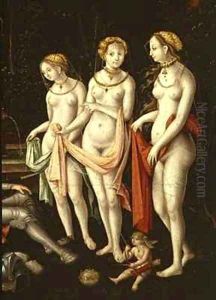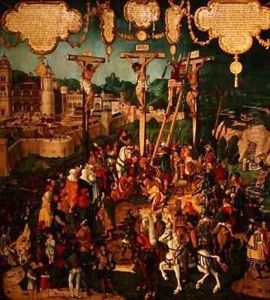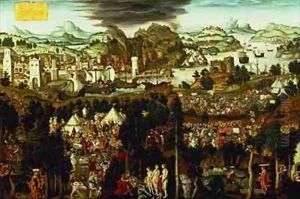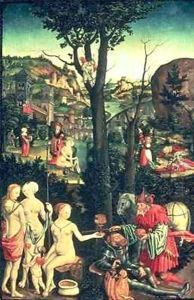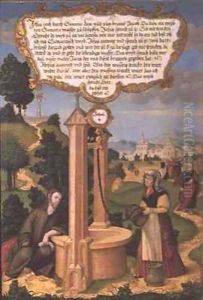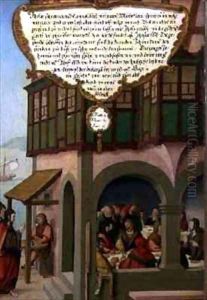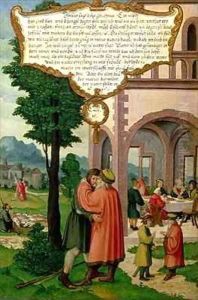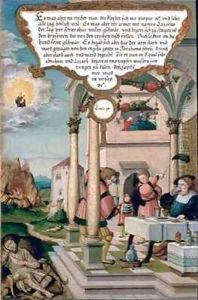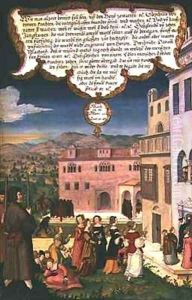Matthias Gerung or Gerou Paintings
Matthias Gerung, also known as Matthias Gerou, was a German painter and graphic artist active during the Renaissance period. Born in 1500 in Nordlingen, a town in the Holy Roman Empire, Gerung's early life is not well-documented, but he is believed to have trained as an artist in his hometown before embarking on his career.
Gerung's work is characterized by its intricate detail and often allegorical content. He was primarily known for his woodcuts and illustrations, which were commonly used in the printing of books and pamphlets. This was a time of great religious upheaval in Europe, and Gerung's work reflects the tumultuous events of the Reformation. His most famous work is the woodcut series for the 'Omnium Poene Europae, Asiae, Aphricae atque Americae Gentium Habitus' (Costumes of All the Peoples of Europe, Asia, Africa and America), which depicted the dress and customs of people from various parts of the world.
Gerung was also known for his illustrations for the 'Commentary on the Apocalypse' by the reformer Philipp Melanchthon, a close associate of Martin Luther. These illustrations are noted for their vivid imagery and complex iconography, which was interpreted as both religious and political commentary. Gerung's work in this context must be viewed through the lens of the intense religious conflicts of his time, as his art often carried strong messages of support for the Protestant cause.
In addition to his prints, Matthias Gerung was also an accomplished painter, although fewer of his paintings survive. He was commissioned to create altarpieces and other religious works, which often included the same level of detail and allegorical complexity as his prints.
Gerung died in 1570, having spent most of his career in the service of the Protestant Reformation. His work remains significant not only for its artistic merit but also for its historical importance, providing insight into the religious, social, and political thought of his era. Despite not being as widely recognized as some of his contemporaries, Gerung's contributions to the art of woodcutting and illustration have earned him a place in the annals of art history.
